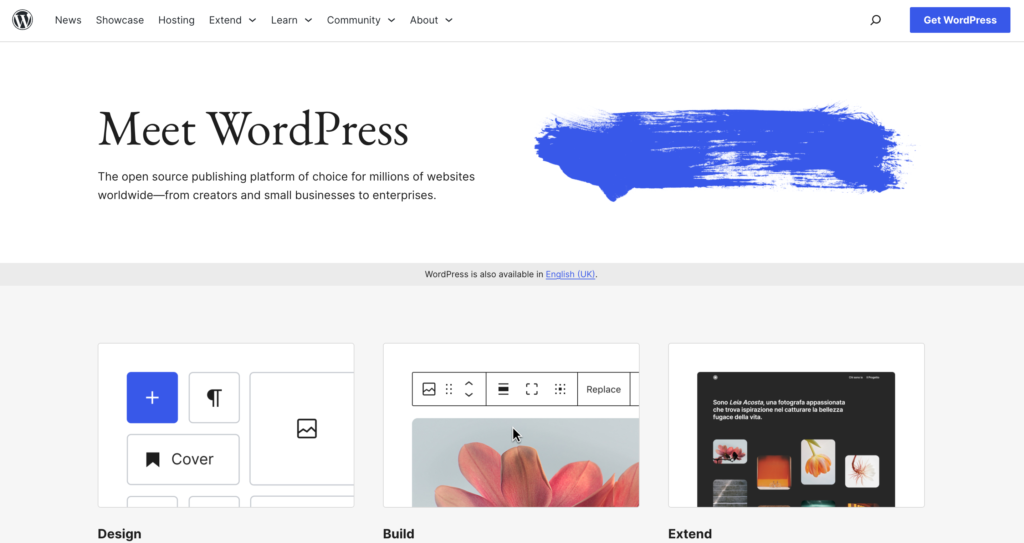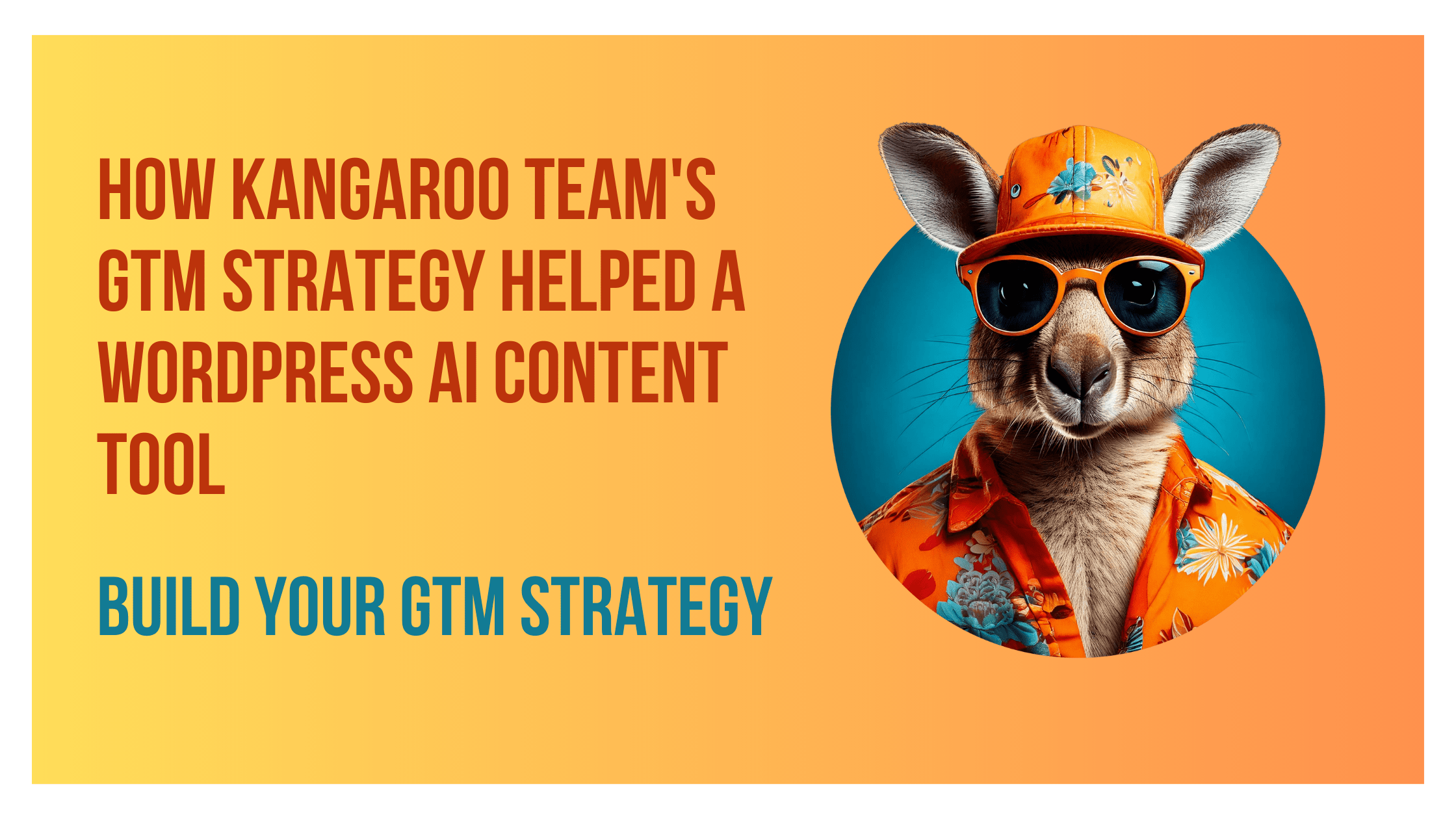Hello, readers! Today, I’m here to take you behind the scenes on a journey with my Kangaroo Team, my dedicated digital marketing squad to map out a go-to-market or GTM strategy for a brand-new AI content writing tool for WordPress.
With the expert guidance of The Umar Saif at the helm, we’re laser-focused on shaping a strategy that’s both effective and adaptable to the needs of today’s WordPress users, from bloggers to SEO pros and content-driven brands.
In this blog, I’ll walk through our approach to building and launching a WordPress plugin with our GTM strategy that leverages AI for content creation. If you’re a content strategist, SEO enthusiast, or agency manager, get ready to pick up a few insights from The Umar Saif and my team as we dive in!
Why a WordPress Plugin?

Before diving into the plan, let’s talk about why WordPress is the perfect launchpad for an AI content tool. WordPress powers over 40% of the web, making it a massive playground for content creators, SEO specialists, and digital marketing teams. An AI-driven content plugin can help WordPress users improve content quality, enhance SEO, and scale content production—all without leaving the dashboard. This isn’t just about adding AI to the mix; it’s about making AI an accessible, integrated part of WordPress content creation.
Key Elements of Our GTM Strategy
Our go-to-market plan, backed by the insights of The Umar Saif and my Kangaroo Team, is built around creating value, building credibility, and targeting the right audience. Here’s how we’ll do it:
1. Market Research and Audience Segmentation

We started with extensive research, targeting three main groups of WordPress users:
- Freelance Writers & Bloggers: Solo creators who juggle everything from SEO to publishing schedules.
- Digital Marketing Agencies: Teams managing multiple WordPress sites, with a focus on content scalability and consistency.
- Small-to-Medium Businesses (SMBs): Companies with content-heavy marketing departments looking to streamline production.
We also analyzed competitors and user needs to understand where other plugins fall short. With this insight, we tailored our tool to address real pain points—SEO optimization, readability checks, and brand voice consistency.
2. Crafting a Clear Value Proposition
When it comes to a new AI tool, clarity is king. Our value proposition had to be crisp and focused on the specific needs of WordPress users. Here’s our pitch:
“Streamline content creation with an AI tool that helps you write, optimize, and publish SEO-friendly content directly in WordPress.”
This value proposition keeps our focus on SEO optimization, ease of use within WordPress, and brand voice consistency—three pillars that will resonate with our target audience.
3. Designing the Freemium Pricing Model
To get as many users as possible to try the tool, we’re going with a freemium model. Here’s how we’re structuring it:
- Free Version: Essential features for solo creators and smaller teams, such as basic content suggestions and limited word count.
- Pro Version: Advanced SEO optimizations, industry-specific templates, and a higher word cap for content-driven brands.
- Agency Version: Multi-site access, collaboration tools, and customized features for agencies and large teams managing several WordPress sites.
To further boost our initial sales, we’re also offering a Lifetime Deal (LTD) for early adopters. This exclusive offer not only provides exceptional value but also encourages users to commit to our tool long-term.
Offering a robust free version lets users see the value before committing to a paid plan. And with features like custom tone adjustments and SEO insights in the paid versions, along with the enticing LTD offer, users have clear reasons to upgrade.
4. Building a Multi-Channel Marketing Strategy
Our marketing plan will blend content, social media, SEO, and influencer partnerships to build awareness and trust around the tool.
- Content Marketing: I’ll be publishing regular blogs on topics like “Best AI Content Writing Tools for WordPress” and “How AI Enhances WordPress Content Creation.” The goal is to drive organic traffic by targeting highly relevant keywords.
- SEO Optimization: We’ll focus on optimizing our landing pages and blog posts for terms like “AI content writing tool for WordPress” and “WordPress AI plugin for SEO.”
- Influencer Partnerships: Collaborating with influencers in the WordPress and digital marketing space will allow us to reach a highly engaged audience.
- Social Media and Paid Ads: To attract attention from digital marketing teams, bloggers, and WordPress developers, we’ll use targeted ads on LinkedIn, Facebook, and Instagram.
This multi-channel approach will help us create both organic and paid awareness, driving downloads from multiple angles.
5. Distribution Channels and Partnerships
Our primary channel will, of course, be the WordPress Plugin Directory. But we’ll also explore affiliate partnerships with WordPress and SEO-focused bloggers, encouraging them to review and promote the plugin on their own sites.
For agencies and large organizations, we’ll reach out directly with personalized demos, showing off the tool’s ability to boost productivity and consistency across multiple sites. Our aim is to make this tool the go-to AI content assistant for WordPress.
6. Onboarding and User Support
Once users download the plugin, we want to make sure they hit the ground running. The Kangaroo Team and I are developing a step-by-step onboarding tutorial that guides new users through setup and features. Plus, we’ll offer:
- In-app Tooltips: To help users understand each feature without leaving WordPress.
- Video Tutorials and Guides: Walkthroughs on how to optimize content, adjust tone, and leverage SEO insights.
- Customer Success Team: Providing real-time chat support for Pro and Agency users.
The goal is to ensure a smooth onboarding process that shows users immediate value, increasing the likelihood of upgrades.
7. Tracking Performance and Iterating
Finally, no GTM plan is complete without a system for tracking success. Here’s how we’ll measure performance:
- Downloads and Conversion Rates: Monitoring free-to-paid conversions and active user counts will help us gauge interest and adoption.
- Engagement Metrics: Tracking which features are most popular can guide future updates.
- Customer Satisfaction: Through user reviews, NPS scores, and support feedback, we’ll understand what’s working and where improvements are needed.
By keeping a close eye on these KPIs, we can make data-driven adjustments to improve user experience and maximize impact.
Wrapping Up
Bringing an AI content writing tool for WordPress to market is a thrilling journey, and with The Umar Saif and the Kangaroo Team by my side, we’re ready to make this plugin a powerful asset for creators and marketers alike. From understanding our audience to delivering value at every turn, our GTM strategy is all about empowering WordPress users to create better content with less effort.

Are you ready to see AI-powered content creation in action? Stay tuned—it’s going to be a game-changer.


Leave a Reply